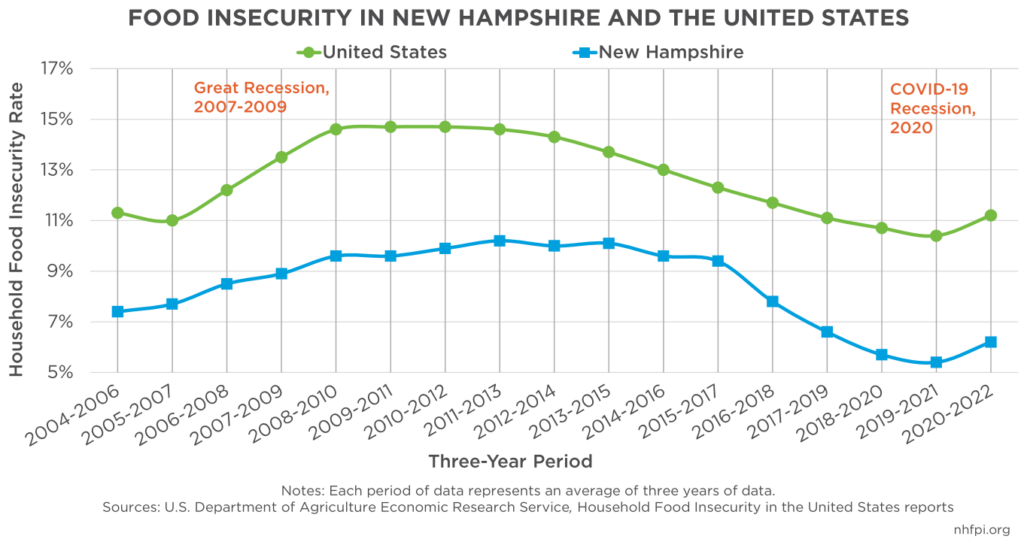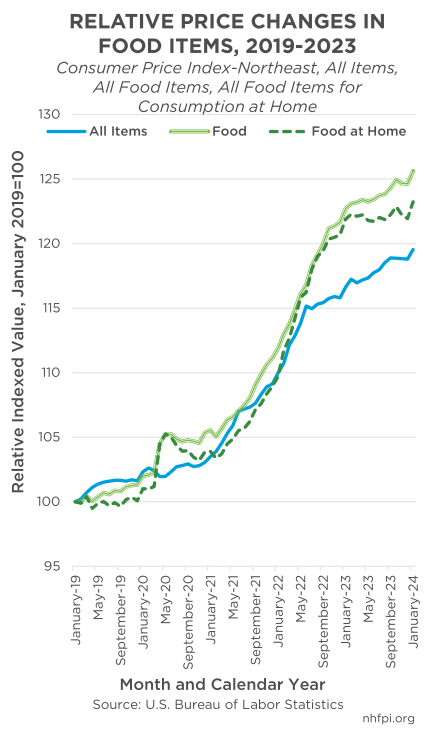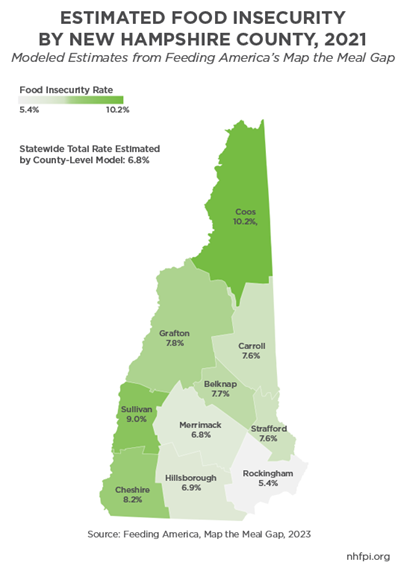Food security at the household level is defined by the U.S. Department of Agriculture (USDA) as “access at all times to enough food for an active, healthy life for all household members.” Not reaching this status is considered food insecurity. A specific USDA survey provides the official food insecurity rate nationally and for each state, with state-level data averaged over a three-year period; other surveys, food assistance program enrollment, and modeled estimates offer more insights into food insecurity.
Pandemic-Related Aid Reduced Food Insecurity Temporarily
Food insecurity due to resource limitations is related to poverty. The public policy response to both the COVID-19 pandemic and the associated economic recession led to reductions in poverty and food insecurity. Federal assistance through one-time Economic Impact Payments, the expansions of the Child Tax Credit and the Earned Income Tax Credit, and enhancements of food assistance programs such as the Supplemental Nutrition Assistance Program (SNAP) and school meals programs reduced food insecurity rates; this policy response generated a very different outcome for food insecurity than the Great Recession of 2007-2009, when food insecurity rose in New Hampshire and nationally.
Food insecurity rose nationally between 2021 and 2022 as significant pandemic aid to households expired. The three-year average food insecurity rate for New Hampshire during 2020-2022 was 6.2 percent, lower than the overall national rate and the lowest point estimate rate among the 50 states, but statistically indistinguishable from the food insecurity rates of three other states. While the estimated rate in New Hampshire increased from the 2019-2021 rate of 5.4 percent, the change was not statistically significant; more data would be needed to measure the magnitude of an increase in 2022. The 2020-2022 rate represents about 35,000 food insecure households in New Hampshire.
Food Price Changes Challenge Food Security
Inflation has been a risk to financial security for many households, and food prices have risen substantially more than prices overall. The Consumer Price Index for urban consumers in the northeastern United States estimated prices for all consumer goods and services in January 2024 were about 19.5 percent higher than in January 2019; during this five-year period, food prices rose about 25.6 percent. Prices for “food at home,” which represents groceries and excludes restaurant meals, increased 23.2 percent.
In survey data collected during 2023, approximately one in three New Hampshire adults reported affording usual household expenses was somewhat or very difficult. This data source also indicated that about seven percent of adults reported there was sometimes or often not enough to eat, while another 14 percent had enough food, but not always the kinds wanted in the household because they could not afford to buy more.
Food Assistance Needs Vary Across State
Estimates of food insecurity by community using modeling based on statistical relationships between food insecurity and other data suggest substantially different levels of food insecurity across regions of the state. The food insecurity rate in rural northern Coos County was estimated to be about 10 percent in 2021, followed by 9 percent in rural western Sullivan County. The estimated rate for Rockingham County, the lowest among the counties, was 5.4 percent.
Food assistance program enrollment also suggested differing levels of need. Enrollment in SNAP totaled more than one in five residents of Stratford, and more than 12 percent of the populations of Berlin, Claremont, Winchester, Stewartstown, Franklin, and Laconia, while only accounting for 5.2 of the statewide population in State Fiscal Year 2023. The most recent free or subsidized school meal program enrollment data indicate Stratford, Littleton, Stewartstown, Newport, and Dalton have about 60 percent or more of resident students eligible for these benefits, much higher than the estimated 26 percent enrolled statewide.
For more information and citations, see NHFPI’s March 2024 Issue Brief Poverty and Food Insecurity in New Hampshire During and Following the COVID-19 Crisis.



